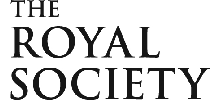Researchers at Imperial College London have shown how the whole body changes while learning new movement-based skills.
We found that when you are learning a new dexterous skill, every part of the body is learning. Professor Aldo Faisal Department of Bioengineering
By using a new data-driven approach to analyse full-body movement during motor learning in the real world, the researchers both demonstrated the involvement of the whole body in the learning process and identified the key joint movement for learning. The approach and subsequent findings highlight the importance of studying human neuroscience in the wild – and how it could help bolster research in movement disorders and rehabilitation.
Playing pool; analysing movement
Neuroscience experiments, which investigate the brain and nervous system, are usually conducted in a laboratory setting. However, these are not necessarily the best way to study neuroscience as laboratory conditions might not accurately reflect the real-world environment.
Now, Professor Aldo Faisal and Dr Shlomi Haar at Imperial's Brain and Behaviour lab have taken neuroscience into the real world by using pool-billiards to understand how people learn movement skills using all parts of their bodies.
The researchers did this by placing sensors across the bodies of 30 individuals who were learning to play pool billiards for the first time. The sensors recorded the movements of the limbs and torso, and their data was uploaded onto a computer for analysis.
The data helped the researchers to reconstruct the movement of the full skeleton as an avatar. Not only did this allow full-body visualisation, but also enabled accurate analysis of the movement in each single joint as well as the holistic, or whole body, movement. By measuring whole-body movements, they found that learning happens from head to toe: although the main movement was in the elbow of the arm holding the cue stick, as is to be expected with pool, the whole body also changed and improved its motor learning. This data-driven approach to neuroscience adds more detail to what we know about motor learning, demonstrating that it is a whole body experience.
By measuring whole-body movements, they found that learning happens from head to toe: although the main movement was in the elbow of the arm holding the cue stick, as is to be expected with pool, the whole body also changed and improved its motor learning. This data-driven approach to neuroscience adds more detail to what we know about motor learning, demonstrating that it is a whole body experience.
Learning with the whole body
Lead researcher Professor Aldo Faisal of the Departments of Computing and Bioengineering said: “Learning pool doesn’t require pre-existing technical expertise, so it was a good way to measure how humans learn a new skill. We found that when you are learning a new dexterous skill, every part of the body is learning.”
The data also showed that learning mechanisms vary from person to person and that just like learning in school, each person learns motor control in a different way. Of the 30 participants completing the same task, it was clear there were two types of learners who use different learning mechanisms.
Professor Faisal said: “Each of these participants had a predominant learning method. Only once we introduce subjects with the complexity of the real-world do we see that each person is different, and seeing what different mechanisms come out.”
Real-world applications
This real-world approach to neuroscience shows that we don’t have to manipulate the world to find what we are looking for. Dr Shlomi Haar Department of Brain Sciences
The researchers say their findings add to the knowledge we have of how the body learns to move, and also how the body could re-learn how to move following stroke. This wild, more natural approach to neuroscience could help close the gap between the real world and classic motor control experiments in the lab.
Understanding how learning between the joints and across the whole body takes place has translational potential in rehabilitation learning, as well as in sports science. For example, the researchers show that while learning pool, learning is fastest in the shoulder, yet it takes movements in the elbow and even more in the wrist. This is nicely in line with phenomena known from stroke recovery where the shoulder movement is the first to recover and the individual fingers are the last. Similarly, when learning to play a sport people learn to optimize the body manoeuvres first, then the detailed techniques.
Co-author Dr Shlomi Haar of Imperial’s Department of Brain Sciences said: “This real-world approach to neuroscience shows that we don’t have to manipulate the world to find what we are looking for. Instead, we can observe the world and extract meaning from people’s movement and brain activity as they go about their real-world tasks and display free behaviour.
“The way the data unfolded told stories - stories about learning across the body, and stories of different learning mechanisms. This demonstrates the value of testing in the real world.”
This work is part of a larger project on real world motor-learning skills. These studies include studying the brain activity while learning real-world tasks, and the use of virtual reality to embody motor learning.
This research was funded by Royal Society-Kohn International Fellowship and eNHANCE under the European Union’s Horizon.
–
Read the full paper at Nature Scientific Reports: Motor learning in real-world pool billiards
Supporters

Article text (excluding photos or graphics) © Imperial College London.
Photos and graphics subject to third party copyright used with permission or © Imperial College London.
Reporter
Alana Cullen
Communications Division

Contact details
Email: press.office@imperial.ac.uk
Show all stories by this author




Leave a comment
Your comment may be published, displaying your name as you provide it, unless you request otherwise. Your contact details will never be published.